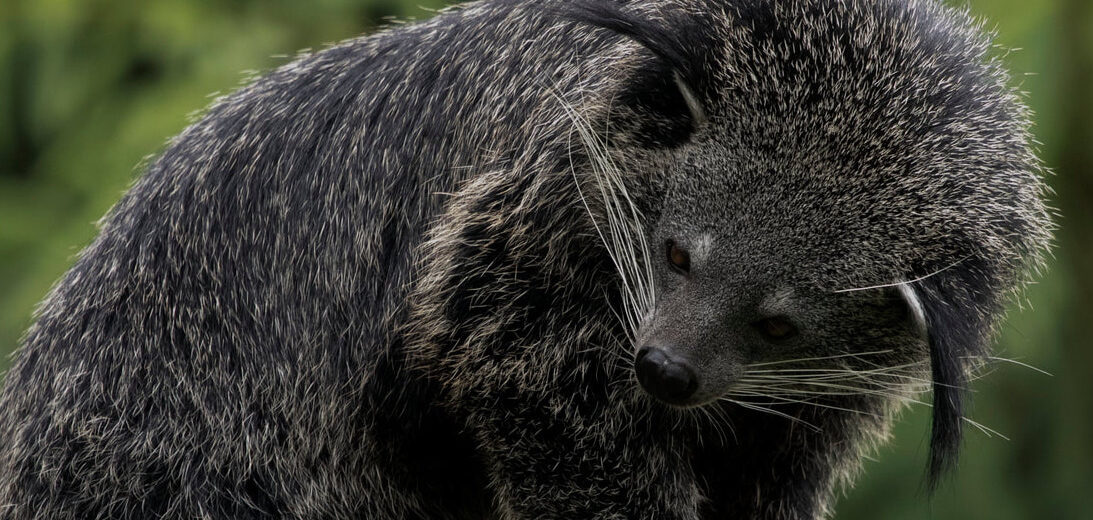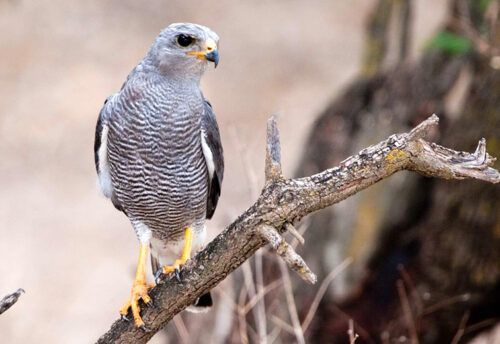
The binturong, aka bearcat, Asian bearcat, or Asian civet, belongs to the same family as a variety of other small carnivores (eat meat) such as mongooses, civets, genets, and fossa. They also share a variety of traits with them too, including a long nose and having more teeth than most other carnivorous mammals. They are listed as Vulnerable by the IUCN due to use in traditional Asian medicine, hunting, collecting, and accelerated habitat destruction.
First the Stats…
Scientific name: Arctictis binturong
Weight: Up to 71 lbs.
Length: Up to 2.8 feet, plus their 2 foot tail
Lifespan: Up to 26 years
Now on to the Facts!
1.) The binturong is arboreal (spends most of their time in trees), but can’t leap from tree to tree, so they have to descend to the ground to move to another tree.
2.) Binturongs are excellent swimmers and divers.
3.) Their tail is actually prehensile and is used as an extra limb, while making their way through the trees.
4.) Even though they are classified as carnivores, they are actually omnivores (eating plant and animal matter); eating a variety of fruit.
5.) The typical diet consists of eggs, carrion (dead animals), leaves, plant shoots, small invertebrates, birds, fish, small mammals, and fruits such as the strangler fig.
But wait, there’s more on the binturong!
6.) Like other members of the Viverridae family, these critters have special scent glands, located just under their tail that are used for marking their territory. The scent they leave behind smells like buttered popcorn!
7.) Because they walk flat footed, they have the same side to side gate that bears have.
Did you know…?
Females can undergo embryotic implantation. This is where the male and female can mate whenever they want, but the female can delay the birth of her young until the environmental conditions are best suited to raise her young.
8.) Tigers, snakes, and birds of prey are their primary predators.
9.) They use a variety of sounds to communicate, like high pitched noises and growls when they are angry and a laughing/chuckling sound when they are happy.
10.) Binturongs mate throughout the year, yet most births occur between January and March.
Now a Short Binturong Video!
Also, check out the Critter Science YouTube channel. Videos added frequently!
Want to suggest a critter for me to write about? Let me know here.



